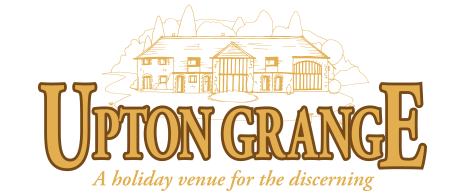In the summer of 1944 our section of Dorset coast was alive with military activity. Thousands of troops, many of them American, were billeted near Weymouth and Portland. A few miles to the east, the population of an entire village had been expelled to create a huge training area for soldiers and tanks.
The sky was alive with aircraft – transports, fighters and bombers. While the Luftwaffe was finding it increasingly difficult to fly above Britain, it was vital no gaps appeared in the nation’s air defences. The huge D-Day invasion force had to be protected as it gathered, trained, and finally, embarked in early June.
Upton Grange, or as it was then, Upton Farm, had a part to play in this momentous story.
RAF arrive in 1941
There’s been a farm here since the medieval days, and perhaps earlier. Many of the buildings that are now our holiday cottages were built at least three hundred years ago. But by the outbreak of the Second World War, the farm was in serious decline.
In 1941 the RAF moved in, when they created RAF Ringstead. It was part of a network of radar stations, where cutting-edge detection technology was deployed to protect the nation.
If you look closely, you can still see evidence of the RAF base and the radar installations. There are a number of prefabricated buildings in Upton, and even in our grounds, that were once part of the base. In the nearby countryside stand the remains of receiving towers, transmitter blocks and substations. The equipment has gone, but the concrete bunkers that housed it are still in place.
Doris's story
We know a little about Upton Grange’s part in the story because of a visit by Doris, in 1994. She was one of the first to stay in the newly-converted holiday cottages, and she came for the 50th anniversary of D-Day.
Doris was stationed here during the Second World War, from 1943 to 1945. She was an ‘ops’ girl, one of the team who manned the operations room. It was in the cow house, which is now occupied by Owl’s Roost and Foxes Cottage.
Doris and her colleagues were responsible for monitoring the movement of enemy aircraft, particularly those flying at high altitudes to avoid detection. Later in the war they also kept an eye on vessels moving in the English Channel.
Coming back to Upton Grange was particularly special to Doris. While she served here she met an American sailor. One evening, at the Smugglers Inn at nearby Osmington, he proposed to her. She left England in 1946 and didn’t come back until that 50th anniversary visit.

Upton's small place in D-Day history
It wasn’t just the RAF who operated around Upton. Group Captain Jim Stagg, Chief Meteorologist for the American forces, stood on the nearby hillside to watch the ships moving in and out of Weymouth and Portland Harbours. He reported directly to the American government from here.
In the days before, during and immediately after D-Day, the activity around Upton Farm must have been frantic. The weather in early June 1944 was unsettled and the original invasion date of 5 June was abandoned because of strong winds and heavy cloud. How many important decisions about the invasion were made in and around our buildings?
When the war was over, the RAF lingered at Ringstead as the radar stations became part of the Cold War defence. But they moved out of Upton Farm and the process of dilapidation resumed its course.
Today Upton Grange is probably the smartest it’s ever been. The buildings have again been put to work – this time protecting holidaymakers who’ve come to enjoy a few days in the Dorset countryside. That’s very different from sheltering cattle and other farmyard animals, or putting a roof over a wartime operations centre.
All that history has helped make Upton Grange what it is today. We’re particularly proud that our buildings played a small part in the nation’s defence during the Second World War and, in particular, with the operations to support the D-Day landings of 1944.
Photos:
Header photo show US troops practising an amphibious landing. Public domain image supplied by National Museum of the US Navy.
Photo of RAF parade at Ringstead is from the 1950s. Kindly supplied by a guest at Upton Grange.

